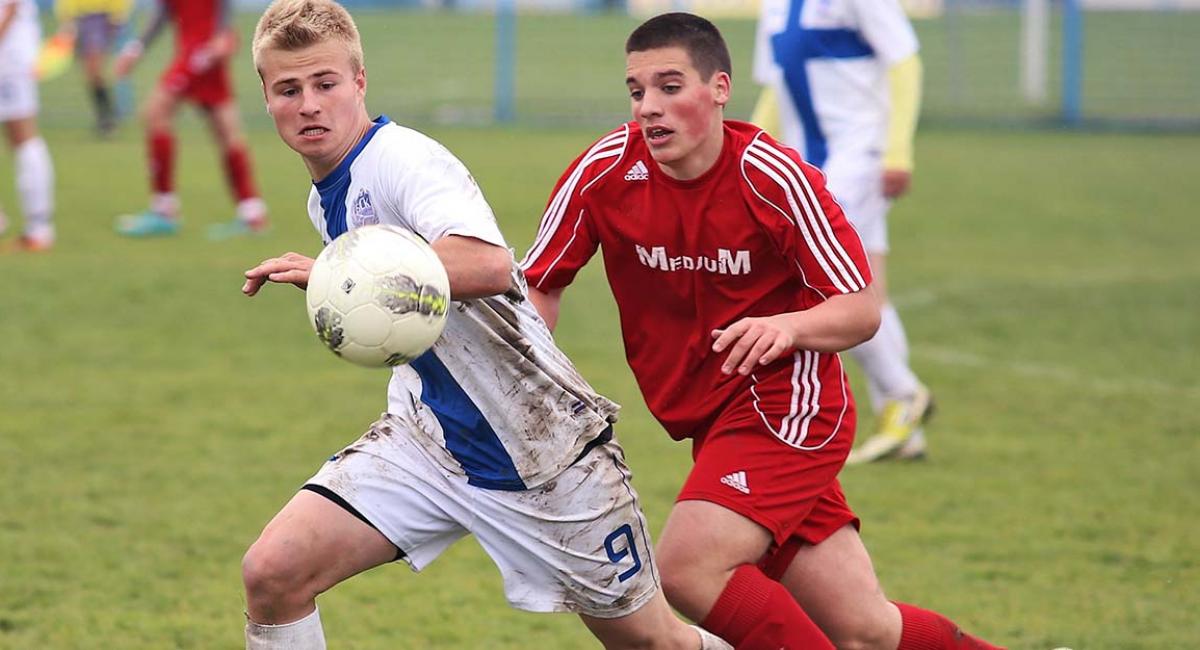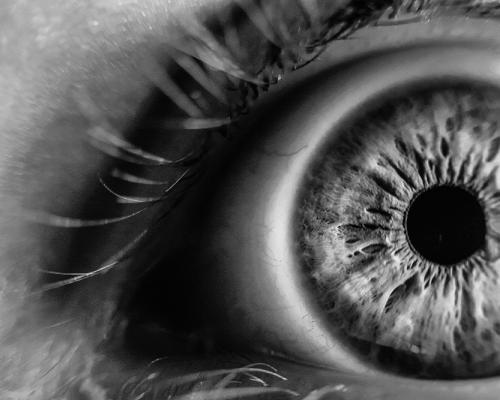Car Crash
Denise Winn describes how the rewind technique helped with a mother and son’s complex responses to his near-fatal injury.
It is the nightmare of every parent of an adolescent or young adult: the call in the early hours – “please come to the hospital at once. There’s been an accident.” When Natalie Stevens received such a call at 1.30am on a Sunday morning, from the mother of her son’s girlfriend, she was still groggy from sleep and didn’t realise the seriousness of it. She thought her 21-year-old son Jack must have broken a bone. But the voice at the other end of the line was insistent. It was only when she and her husband arrived at the hospital that she learned that Jack, completely sober but taking an unfamiliar route to his girlfriend’s house, had crashed into a tree on a bend, suffering a serious bleed to the brain. He had to be operated on immediately and they didn’t see him until afterwards, in intensive care.
So began a rollercoaster of relentlessly retraumatising experiences that was to last for several weeks. Natalie and her husband learned that Jack had been ‘clinically dead’ at the scene of the accident and had had to be revived. When they finally saw him after his six-and-a-half-hour operation, Jack’s waxy white, grossly swollen face led Natalie to pattern match instantly to the shocking appearance, in a chapel of rest, of a friend who had recently hanged himself. Jack’s life support machine gave the only indication to Natalie that her son was still alive.
Jack spent six weeks in intensive care, the first three in a coma. The consultant never had good news and the prognosis remained dire. First, the family was told to prepare for a bad outcome when sedation was stopped, as the medical staff didn’t expect Jack to wake up; but he opened his eyes. That joy was short-lived when the neurosurgeon said that he had never before known a brain not to “pop back into the skull” (as Natalie put it) – another bad sign. Then they were told that there were three possible remedies, the third being last-chance saloon. Hopes that the first would work were dashed, then their hopes for the second, and finally it was touch and go while the third was carried out and, against all medical expectation, succeeded. But now Natalie and her family had to cope with the news that Jack was likely to be severely brain injured and would probably be left in a vegetative state.
“The shock of it all was terrible. It was as though my heart had been broken into, the pain was so fierce,” recalled Natalie. Yet, throughout this, somehow she kept strong. She had had a gut feeling, she said, right from the start, that Jack would be fine. She also had a very strong faith. (It had been tested, however. As she always prayed at mass for her children to be kept safe, she felt initially that her prayers had not been listened to. Then her sister reminded her what ‘luck’ it was that a motorist had happened to drive down the remote, unlit road on which Jack had had his accident, recognise that the heap of clothing in the road was, in fact, a person and alert emergency services. That helpful reframe restored Natalie’s belief.) Natalie remained so positive, despite all the setbacks, that the doctors and nurses feared she was in denial. “I was like a thing possessed,” she said, “obsessed with keeping positive. I had to keep the energy going, to aid his recovery. As long as he could live, we would deal with it.”
Everything possible was done to try to reconnect Jack to his former life – photos of family and friends were put up around his bed and videos were played of football games involving the premiership team he fanatically supported. Natalie brought in a blanket he had had at home, which bore the team name and colours, and a team teddy bear and badge, all to help try to jog his memory as he started to recover consciousness. (This was to become highly significant later.) And Jack did make the most amazing recovery, so amazing that he is now the subject of papers in academic journals. Not only did he not suffer major brain damage but, over a period of just months, he worked hard to relearn to walk, talk, eat, read and spell. Alas, he was left with epilepsy, after a titanium plate had to be inserted into his head. But Jack has now returned part time to his job in a department store and, as the epilepsy is controlled, is determined to drive again.
team he fanatically supported. Natalie brought in a blanket he had had at home, which bore the team name and colours, and a team teddy bear and badge, all to help try to jog his memory as he started to recover consciousness. (This was to become highly significant later.) And Jack did make the most amazing recovery, so amazing that he is now the subject of papers in academic journals. Not only did he not suffer major brain damage but, over a period of just months, he worked hard to relearn to walk, talk, eat, read and spell. Alas, he was left with epilepsy, after a titanium plate had to be inserted into his head. But Jack has now returned part time to his job in a department store and, as the epilepsy is controlled, is determined to drive again.
"My body can't move on"
Natalie is thrilled and thankful. “The boy who left home that fateful day is the boy who has come back,” she told me at our first session. “But, somehow, my body feels it can’t move on from this. It feels like it has been hit by something. I’m fine and then I suddenly can’t cope. Even talking about this now, I can feel my heart pounding and I’m tense in my chest and shaky inside. I can’t take pleasure in anything. Family events, which I used to love, I don’t even want to go to them.”
While her symptoms felt inexplicable to her (after all, she had her son back and should be ecstatic, she felt), fortunately a friend of hers knew about the human givens approach and realised Natalie would benefit from the rewind technique. When I explained to her that, as a result of the relentless series of traumatic experiences she had gone through, her amygdala, the brain’s alarm system, had got stuck in a state of permanent alert, unable as yet to let the events be consigned to the past, it made perfect sense to her. She was highly motivated to undergo the rewind technique, the non-invasive method taught to human givens practitioners for neutralising trauma. The trauma is re-experienced in a dissociated fashion (ie at one remove, on a television screen, in fast-forward and rewind mode) while in a state of deep calm, enabling the traumatic events to be detached from high emotional arousal, put in context (past rather than present) and coded correctly as a narrative memory. We didn’t have time to carry out the procedure in the first session, so I taught Natalie 7/11 breathing and raised her expectations for the next session, one week later.
Very speedy rewind
At our second meeting, Natalie reported that even the breathing had made a huge difference to her, as usually she found it hard to relax. Carrying out the rewind with Natalie was quite remarkable. There was absolutely no difficulty, of course, in activating her fear template – she only had to recall any part of the traumatic course of events and she was physically on high alert. She chose a sandy, tropical beach as her safe, pleasant place and moved through the fast-forward and rewind stages of the procedure so quickly, right from the start, that I wondered if she was, indeed, processing all the traumatic events and took the precaution of suggesting that her unconscious could take the time it needed. The speeds didn’t change. Once Natalie had signalled that she had been through the procedure sufficient times, I built on the highly positive resources that she had shared with me – her faith, her initial gut feeling that all would be okay (which had been proved so right), her mothering skills, her energy, positive outlook and determination, etc – all of which would now continue to be able to serve her well. When we finished, Natalie couldn’t stop beaming. She felt that something tangible had lifted and gone, as if her body had been waiting for this release. She was excited and astounded.
Fear of fits
A couple of weeks later, Natalie called me to say that, ever since our session, she had had all her old verve and zest back. She was wondering, however, if I would see Jack. Although he had no memory whatsoever of the accident and his first six weeks in hospital, the major fit he had experienced much later had frightened him badly. Despite the fact that he would never have one like that again, and was on medication, he panicked if he felt a fit was on the way.
So Jack came to see me. He seemed a very personable and relaxed young man, despite his anxieties. He had by that time had a few fits, when he would experience physical sensations such as a tingling, numbing of one cheek and loss of speech. He knew, at a conscious level, that he would be fine after the fit, and that all he had to do was get himself to a safe place, where he couldn’t hurt himself. However, on one occasion he was out with friends and couldn’t think of a word he wanted. He pattern matched at once to the loss of speech he associated with a fit and, convinced he was about to have a seizure, went into panic and begged to be taken home. There Natalie found him later, hyperventilating, “eyes almost out of his head with fear”.
I explained the rewind technique to Jack and, for his safe, relaxing place, he chose to imagine himself playing for his beloved premiership football team. Having rewound the frightening experience of the very first severe fit and then the later experiences of panicking in the expectation of a fit, I had Jack rehearse coping with any future fits (for instance, at work or with his friends) in the calm way he had been taught. He, too, whizzed remarkably quickly through the fast-forward and rewind phases of the process and smiled and laughed a lot. Afterwards, he said he felt relieved and confident again. Natalie rang me a few weeks later with the feedback that he had been absolutely fine. In fact, he had had a seizure at work the day after our session and had taken it completely in his stride.
A curious development
Several months passed. Then Natalie rang again to tell me of a curious development. Jack had had some unsettling experiences where he had been aware of voices around him but couldn’t make out the words. From his descriptions, she had suddenly started wondering whether he might be getting a bit of his memory back, concerning his experiences in hospital. When he was still in intensive care and not yet able to speak and understand, might he at some point have become aware that people were speaking over and around him (such as clinical staff or family on visits)? It sounded very feasible to me. We know, for instance, from research, that a proportion of patients who spend more than a few days in intensive care units develop post-traumatic stress disorder afterwards, on account of the fragmentary nature of memories for that time, along with nightmares and hallucinations. If these are recalled later, it is difficult for people to make sense of them and this can precipitate post-traumatic stress.1
precipitate post-traumatic stress.1
When Jack came for his session he described two particular experiences that had caused him extreme anxiety. On one occasion, he had been with friends, watching football on television, and suddenly felt overwhelmed by the high volume of sound – the noise of the TV and his friends laughing and talking over it. He couldn’t make out what they were saying, which alarmed him, and when he had picked up a newspaper to distract himself, he found he couldn’t distinguish the words. Again he panicked and had to be taken home.
The ‘dream’
The second situation was a recurring event – somewhere between waking and dreaming. He described himself as having an anxiety attack while dreaming and then experiencing himself having a full-blown seizure, with the sensation of “a rush going right through my body”. He would be aware of being in his own bedroom, surrounded by all his football team paraphernalia – his blanket, pillows, clock, signed team photo and special team teddy. He also realised that he could see all of that very clearly through the light coming in through his window, yet it was night and, in reality, his room has blackout blinds. Everything would feel fuzzy and he would become aware of voices that he couldn’t understand. Although the experience was frightening, once he had had the imagined fit, he felt relaxed again. As a result, however, he had become sensitised to anything to do with his team, which was extremely upsetting for him. He had hidden the teddy bear under the bed and found himself completely unable and unwilling to arrange a tour around the club’s stadium, two tickets for which his workmates had bought for him as a ‘welcome back to work’ present. “That’s really unlike me,” he said. “I can’t even think about who I’d want to take with me.”
The team connection
He wondered whether the fact that he had imagined playing for the team as his relaxing safe place during the previous rewind had somehow activated the negative associations he was experiencing. I said I thought that was highly unlikely, as he had been calm and relaxed at the time, but that it definitely would not be appropriate to use that as his safe place when carrying out the rewind this time, as it was currently associated with anxiety. (It seemed significant that many items connected with the football team had been taken to Jack in hospital to help him re-orient, including the blanket, the teddy bear (which later went with him everywhere in his wheelchair) and a badge, which he wore. A signed team photo had been sent from the club to help his recovery. All this occurred both before and after he started to recover consciousness.)
Jack told me that, after our first session, he had ‘borrowed’ the idea of taking himself off to a safe place and found it a very helpful means of distracting and calming himself – it was how he had coped with his current anxieties. He had imagined a vivid scenario involving a hammock on a desert island, and so we settled on using that for our second rewind. He relaxed very deeply very quickly and we rewound events from before the accident to the present moment, where he was safe and comfortable in my room. I invited his unconscious to include in the process whatever it knew needed to be included.
with his current anxieties. He had imagined a vivid scenario involving a hammock on a desert island, and so we settled on using that for our second rewind. He relaxed very deeply very quickly and we rewound events from before the accident to the present moment, where he was safe and comfortable in my room. I invited his unconscious to include in the process whatever it knew needed to be included.
Again, Jack moved very swiftly through the procedure – at one point, he shook quite suddenly, as if ‘blowing off stress’2 – and, after it was complete, I suggested that the entire trauma had been neutralised now and that the amygdala need not be alerted by anything associated with it again, should other memories surface. I then invited him to see himself enjoying watching his team once more, to feel pride and pleasure in his team-themed bedroom and to rescue the bear from under the bed. He laughed in his trance.
Afterwards, when he had reoriented to the room, he said that, even before I had made those suggestions, he had already brought his clock and his bear onto the hammock with him, so comfortable did he feel about the team again. He also said that, when he left my house, he was going to contact the friend he had decided he wanted to invite to the club tour and arrange the date. “The dream seems as nothing to me now,” he said, full of smiles.
Strong imagination
Jack clearly has very easy access to his imagination. He reported that, when he was on his desert island during the rewind, he had felt the strong heat of the sun and had assumed it was coming through my window. In fact, despite a weak burst at the end of our session, any autumn sunshine had been absent till then. I explained that his imaginative abilities had pros and cons. It was a powerful skill to be able to take himself off within seconds to his desert island as a calming technique. On the other hand, it also led him to imagine the worst very quickly, when he experienced any symptoms he associated with a seizure. We had established that he always felt tingling in one arm immediately before a seizure so, if this didn’t happen, even if he suddenly struggled for a word or felt fuzzy, he would not have a fit and needed, instead, to calm himself through relaxed breathing or imagining his island. We rehearsed this in guided imagery too. I stressed that the more he practised this in reality and experienced the positive effects, the more naturally it would come to him.
I know from Natalie that Jack did go with his friend on the tour and thoroughly enjoyed it. He has his confidence back once more. I hope that, if more memories from around the time of his period in intensive care do surface, his unconscious will recognise that they are unthreatening, and that he has all the skills he needs to carry on successfully with his quite amazing life.
DENISE WINN is editor of the Human Givens Journal and a human givens therapist.
All identifying details of clients have been changed.
This article first appeared in Volume 19 - No. 2: 2012 of the 'Human Givens Journal'
 Spread the word – each issue of the Journal is jam-packed with thought-provoking articles, interviews, case histories, news, research findings, book reviews and more. The journal takes no advertising at all, in order to maintain its editorial independence.
Spread the word – each issue of the Journal is jam-packed with thought-provoking articles, interviews, case histories, news, research findings, book reviews and more. The journal takes no advertising at all, in order to maintain its editorial independence.
To survive, however, it needs new readers and subscribers – if you find the articles, case histories and interviews on this website helpful, and would like to support the human givens approach – please take out a subscription or buy a back issue today.
References:
-
Jones, C, Bäckman, C et al (2010). Intensive care diaries reduce new onset post-traumatic stress disorder following critical illness: a randomised, controlled trial. Critical Care, 14, R168.
-
Levine, P (1998). Blowing off stress. The Therapist, 5, 2, 15–20
Latest Tweets:
Tweets by humangivensLatest News:
HG practitioner participates in global congress
HG practitioner Felicity Jaffrey, who lives and works in Egypt, received the extraordinary honour of being invited to speak at Egypt’s hugely prestigious Global Congress on Population, Health and Human Development (PHDC24) in Cairo in October.
SCoPEd - latest update
The six SCoPEd partners have published their latest update on the important work currently underway with regards to the SCoPEd framework implementation, governance and impact assessment.
Date posted: 14/02/2024













